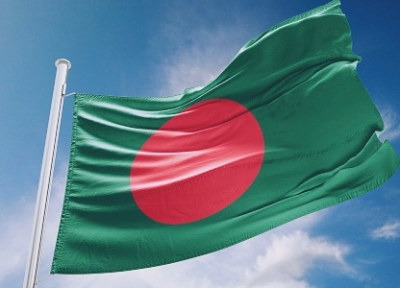Economic inequality in Bangladesh set to widen amid rising poverty and stagnant wages: Report
By IANS | Updated: November 27, 2025 12:55 IST2025-11-27T12:53:14+5:302025-11-27T12:55:09+5:30
New Delhi, Nov 27 Economic inequality in Bangladesh is expected to grow further in the short term as ...

Economic inequality in Bangladesh set to widen amid rising poverty and stagnant wages: Report
New Delhi, Nov 27 Economic inequality in Bangladesh is expected to grow further in the short term as high inflation, stagnant wages and weakening household purchasing power continue to affect low-income families, a report has said.
A new World Bank assessment released in Dhaka warns that more people may slip into poverty as the gap between rich and poor widens, as per The Daily Star report.
The World Bank’s Poverty & Equity Assessment 2025 report shows that the Gini index, which measures inequality on a scale from 0 to 100, has been rising since 2022 and will continue to increase through 2025.
This signals that wealth and income are becoming more concentrated among higher-income households.
The report highlights that while overall consumption inequality in the country has remained stable, the situation is different across regions.
In rural areas, consumption inequality has slightly decreased, with the Gini index falling from 29.2 to 28.2.
But in urban regions, where living costs are higher, inequality has worsened. The urban Gini index climbed from 33.1 to 34.5 -- showing that city residents are facing wider gaps in living standards.
Income inequality has increased even more sharply. When considering earnings, remittances and returns from assets, the Gini index rose from 51 to 54 -- indicating that richer households are gaining much more than poorer ones.
Bangladesh has been dealing with rising inequality for nearly two decades, but the World Bank warns that the current pressures -- such as inflation and slow wage growth --- are speeding up the trend.
Since 2016, consumption growth has become less beneficial for the poorest households, with most gains going to middle- and upper-income families.
The report estimates that nearly 20 lakh more people could fall into poverty in 2025, pushing the national poverty rate above 21 per cent.
Since 2022, about 60 lakh people have already slipped into poverty. The poverty gap, which measures how far the poor are from the poverty line, is also expected to widen by two points this year.
The impact of economic stress has not been the same for everyone. Households with highly skilled workers, better job opportunities or remittance income have managed to avoid the worst effects.
Some have even improved their economic status since 2022. This uneven pattern is expected to push overall inequality up by nearly two Gini points by 2025, according to the report.
Disclaimer: This post has been auto-published from an agency feed without any modifications to the text and has not been reviewed by an editor
Open in app